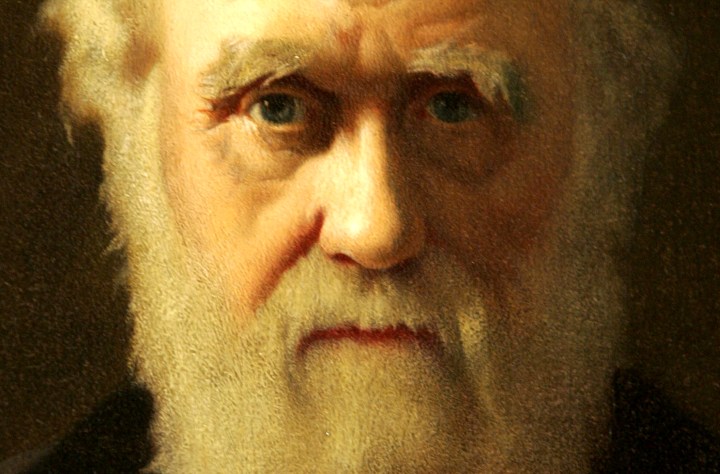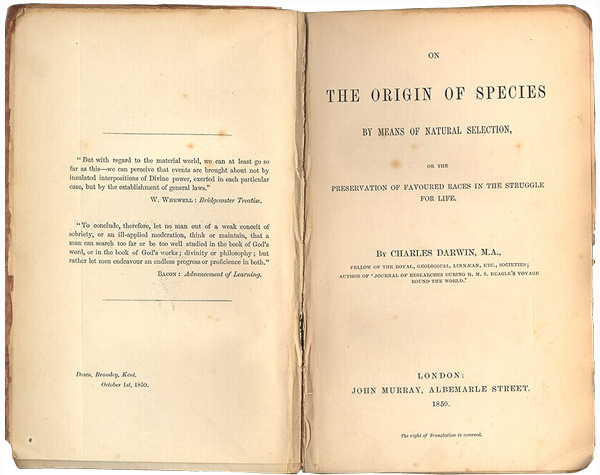Sci-Tech
On the Origin of Species’ 150th meets a world that’s rather different

Charles Darwin's “On the Origin of Species”, published 150 years and eight days ago, is considered to be the foundation of evolutionary biology. Its full title was On the Origin of Species by Means of Natural Selection, or the Preservation of Favoured Races in the Struggle for Life. Yep, it had to be something like that.
There are a number of posits in Darwin’s theory that he considered as “fact” and a number of “inferences” that let people argue until the cows come home. You are where you live, what you eat, and that changes over time, depending on how you do things. Variation and adaptation through natural selection, driven by the unending quest for life.
But 150 years later, he would have to accept that even the facts need a little massaging, especially as PhotoShop, YouTube, and the Internet generally are good at subverting reality to the point that reality may no longer “exist” as we “know” it (a subversion of philosophy 101, or not).
But the basics still ring true, whether fact or inference. Namely, individuals less suited to the environment are less likely to survive and less likely to reproduce; while individuals better suited to the environment are more likely to survive and more likely to reproduce and leave their inheritable traits to future generations (see “DNA”, “variegated replication” and “Star Trek the Movie: Beyond the Beyond”), which gives us the process of natural selection. This slowly effected process results in populations changing to adapt to their environments over many generations (some much faster than others, mind you), and ultimately, these variations accumulate over time to form new species.

Photo: The first two pages of the original, 1859 edition.
Darwin’s book also presented a body of “evidence” that the diversity of life arose by common descent through a branching pattern of evolution. It didn’t quite blow the notion of God out the window (Communism did that). But it sure put paid to the world being made in six days, with a good rest on the seventh. It also scotched the notion that humans were separate from animals. Ideas about the transmutation (a big word, we know) of species profoundly conflicted with the belief that such species were unchanging parts of a designed hierarchy and that humans were unique among animals.
Lately, however, there has been a resurgence, even among people who call themselves scientists (a tiny minority), that God indulged in a process called Intelligent Design.
A movement called Creationism (and dubbed “pseudoscience” or “junk science” by angry rationalists), dismisses Darwin’s theory of natural selection out of hand. Rather, it states that humans were created whole and put on Earth some 10,000 years ago by an über-being or beings. This has set off a huge row in the US between those who want it taught in schools as part of science classes and others of a more secular persuasion.
A small minority of Americans believe that God had no role in creating life. But more than 40% believe that God created humans as they are, while another 40% or so err on the side that humanity has developed over millions of years from less advanced forms of life, but God has guided this process.
.jpg)
Photo: Darwin’s last letter, written just nine days before his death on 19 April 1882.
Darwin also had to consider the issue of extinction, which basically falls into two main categories: mass extinctions (extinctions caused by dramatic external events such as a meteorite strike) and low-level extinctions (caused by competition for food). Darwin was pretty clear on this, using four criteria. Extinctions of species occurred gradually and continuously throughout the history of life; species and groups of species gradually disappear, one after another, first from one spot, then from another and finally from the world; the complete extinction of the species of a group is generally a slower process than their production, and that sudden disappearances of many species – the mass extinctions – were only a result of gaps in the fossil record.
Modern theory speculates that nearly all animal and plant species that have lived on Earth have now become extinct, with extinction the ultimate fate of all species. And current extinction rates are said to be 100 to 1,000 times greater than in the past, mainly because of human activities, including global warming.
So next time someone calls you ape-face, you’d better think hard about it before you lash out. Just say, “thank you, you too, man”.
By Mark Allix
Read more: Darwin Online, Theistic Arguments, The Darwin Awards, Creationism.org, Religious Tolerance.org



 Become an Insider
Become an Insider